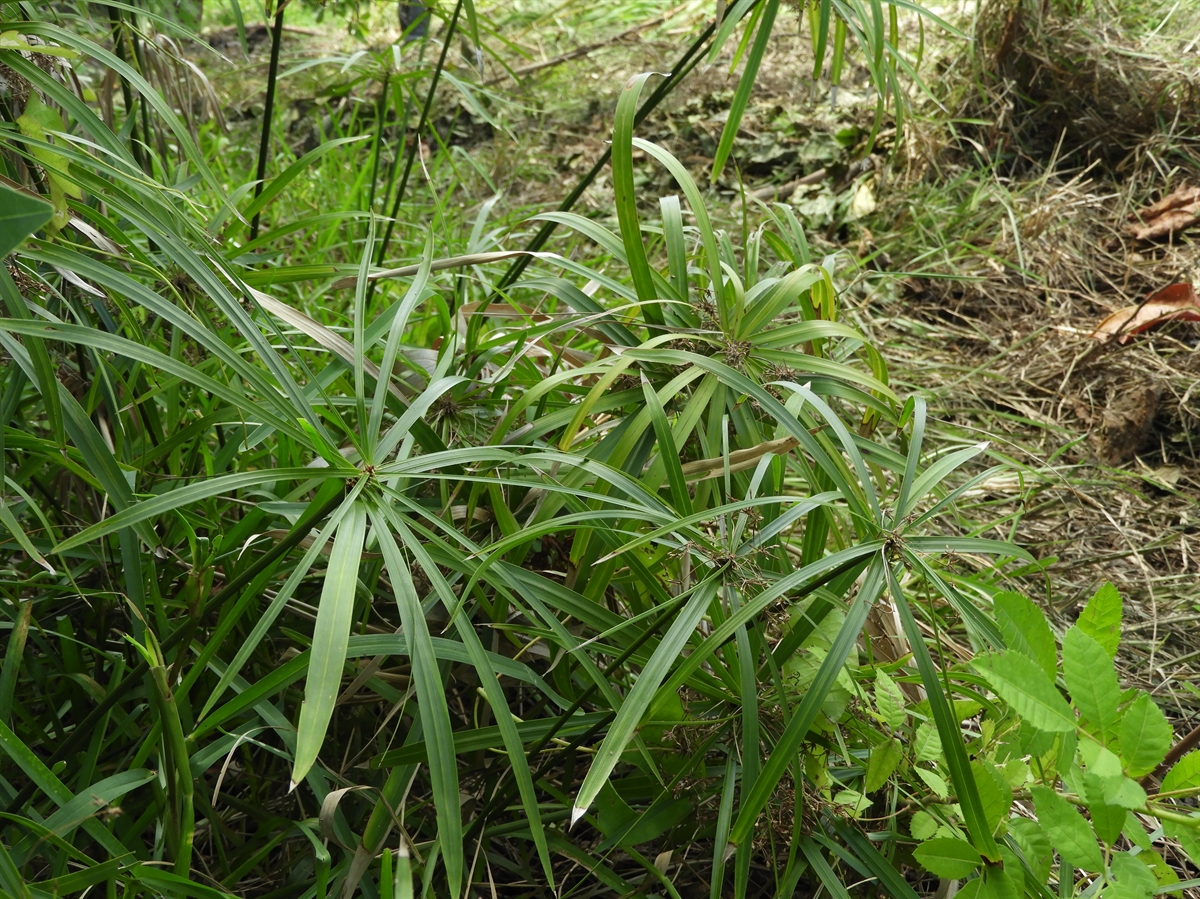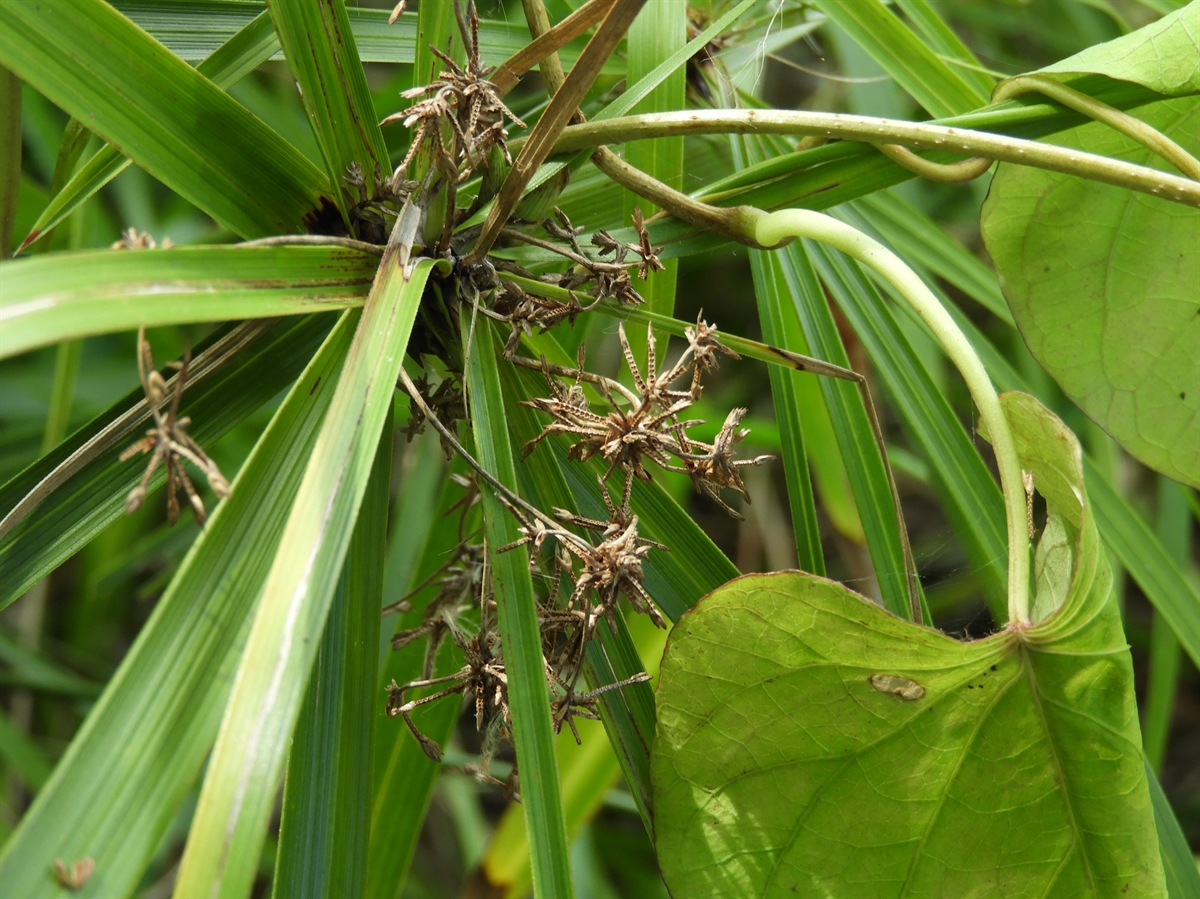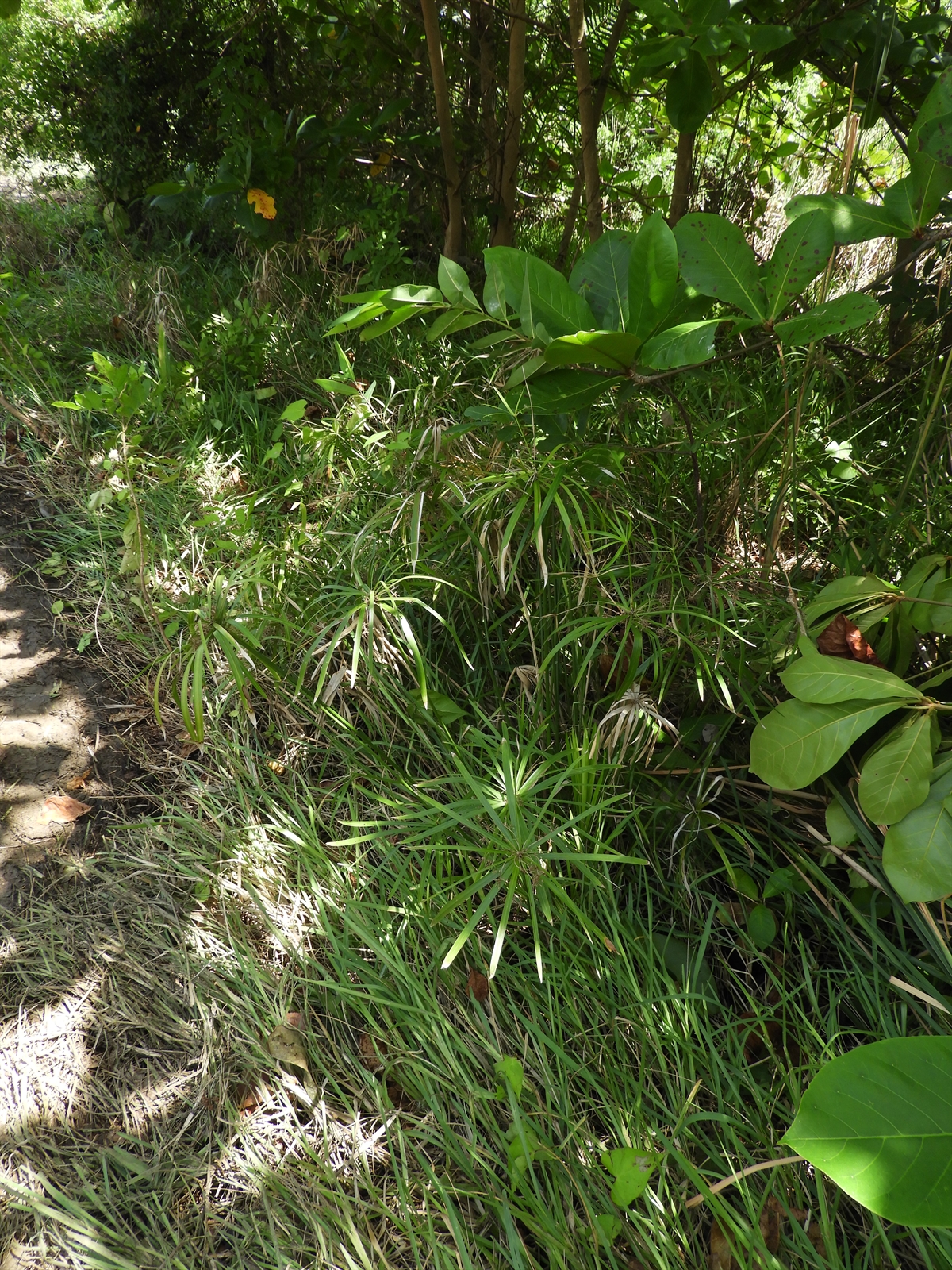Habit: Cyperus alternifolius grows as a clumping perennial herb to 1.5 m in height when in flower, with a slightly triangular stem. The leaves reduced as a sheath to the flowering stalk. The leaf sheath may be reddish brown.
The incomplete, perfect flowers are arranged in a cluster of 20-25 spikelets in an umbel of racemes of spikelets. The reddish brown spikelets are at the end of a triangular shaped peduncle and are subtended by 20-25 leaf like bracts forming the “umbrella”. The spikelets are brown at maturity. Each spikelet has 15-30 flowers. There is no calyx or corolla. There are 3 stamens. The ovary is superior with a single locule. The fruit is a triangular achene at maturity.
Habitat: Cyperus alternifolius grows in wet and dry Human Altered environments (yards, ditches, roadsides, abandoned fields).
Distribution: Cyperus alternifolius is NOT native to the Lucayan Archipelago but occurs in the northern island groupings. It is native to Africa, and the Middle East. It now occurs as non-native weed throughout the Caribbean, North, Central and South America and parts of Asia.
Medicinal/Cultural/Economic usage: Cyperus alternifolius is not known to be used medicinally in the Lucayan Archipelago.
Cyperus alternifolius is used in the horticultural industry but has escaped cultivation.


